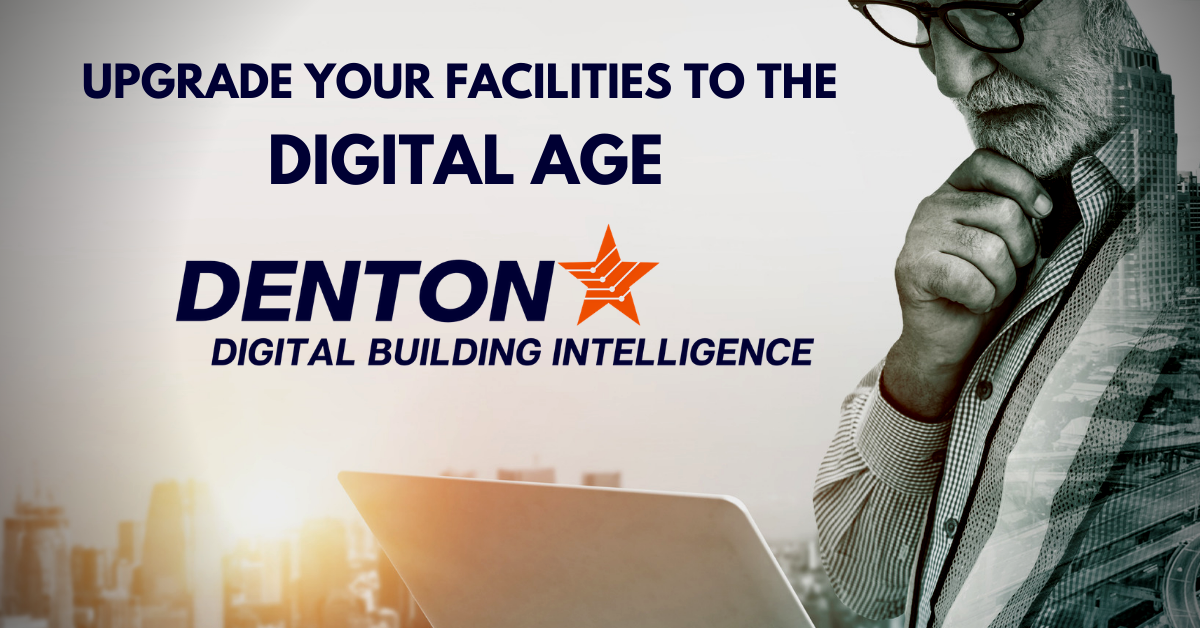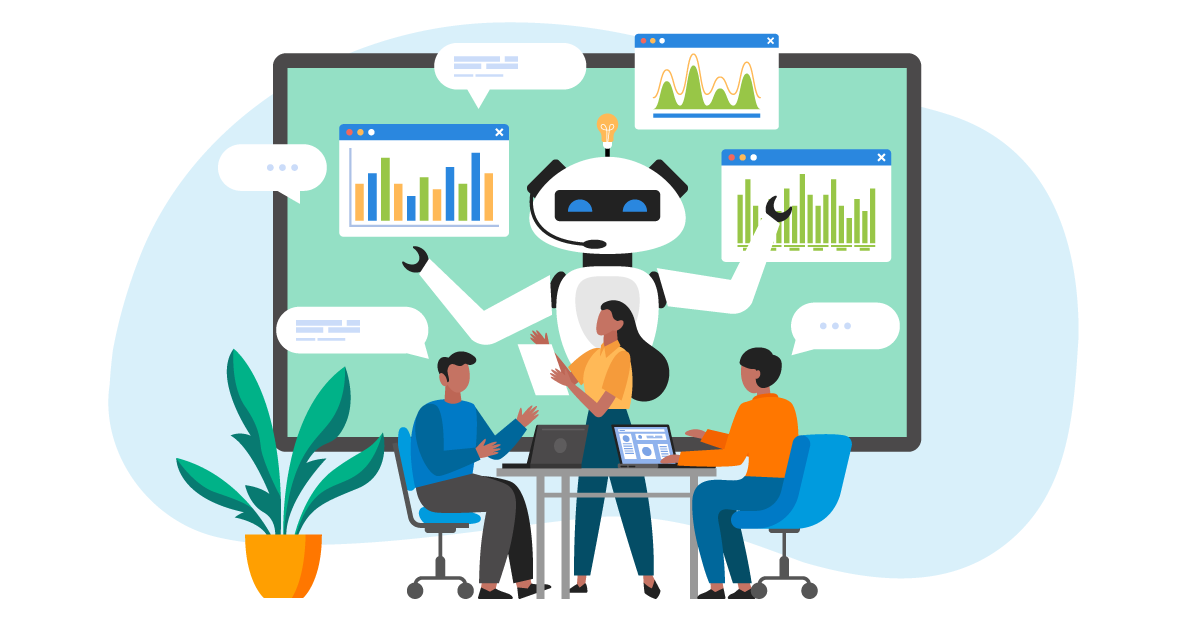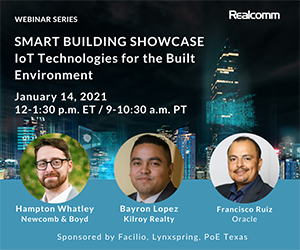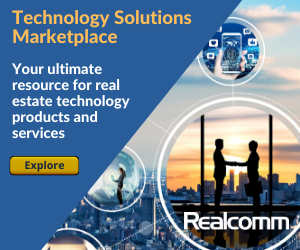Cost Effectively Upgrade to Connected Lighting and Automation with Power over Ethernet

With COVID 19ís impact on real estate market conditions, commercial buildings must offer digital age amenities to attract tenants and their employees. Facility owners and developers need a cost-effective way to incorporate connected lighting and automation with advanced technology amenities to new and existing buildings. This article will show how Power over Ethernet (PoE) can help achieve connected lighting and automation with the best return on investment.
Why choose PoE?

PoE means you can choose to invest in the technology backbone that drives modern business cost-effectively. You can expect:
- 30% CAPEX savings
- 15-45% OPEX savings
- 36 month Return on Investment over equivalent traditional technology
Most importantly, PoE is inherently safe. Per the National Electrical Code (NEC) 725, the system is considered Class 2 wiring. Most local building codes support the installation of PoE without the requirement of conduit or class 1 labor rates.
Finally, PoE operates on the same RESTful API to protocol as the internet, so you are future proofing your facility when you upgrade against any form of obsolescence or supply chain risk.
PoE Texas has leveraged PoE to create a comprehensive connected lighting and automation controls platform for enterprise facilities called Denton Digital Building Intelligence (Denton DBI). Far more than a lighting control system, Denton DBI utilizes PoE to create a full facility automation platform on an Internet Protocol (IP) network.
Five Steps to Upgrade
Upgrading your facilities to connected lighting and automation is easier than you think. The challenge to upgrading to connected automation and lighting is not the technology, which has a 20-year track record, it is managing the strategy and the process of adoption.
- Pick the Right Partner(s)
- Create the Concept
- What value add amenities increase your ROI: Lighting, access control, blinds or space utilization
- Network Architecture: Do you want a distributed system that gives you flexibility to expand and modify or do you want a centralized system that keeps all your networking equipment in one place
- How to segregate Operational Technology from Information Technology
- Assemble the Team
- Prepare the Path
- Concept introduction to the Authorities Having Jurisdiction or AHJs - this is an introductory meeting arranged by your architect, civil engineer, or project manager with the building permitting and development department. Your key objective is demonstrating that you are bringing design and construction professionals with experience in building codes and standards.
During this and subsequent meetings, they will want to understand how the National Electrical Code (NEC) and the National Fire Protection Association guidelines in NFPA 101 apply to the system you are planning to build. The key activity here is providing them with the right information to demonstrate your project meets and complies with the safety standards.
- To get the best financial results, you will need to help your general contractor, low voltage contractor, and your electrical contractor understand the project scope split. This is an important step so that your contractors understand before bidding and can price the project accurately.
- Building Bridges

The right connected solution manages on one platform the full range of building systems, such as: traditional AC lighting and AC systems, wireless IoT devices, retrofitted low voltage automation, PoE enabled IoT devices, and any non-PoE building device such as LED lights. And it needs to be fully compatible with other systems that may currently be employed.
By design, Denton DBI connects PoE to non-PoE devices including access control, sensors, cameras, tablets for digital signage, and, yes, LED lighting. It also integrates with the latest IoT devices, whether they be PoE blinds, wireless and battery-free Enocean controls, sensors, Zigbee, Bluetooth, or Wi-Fi devices. Finally, it leverages the PoE network to manage new or existing 120-277-volt AC circuits and phase dimming light fixtures to meet ANY energy code, both now, and in the future, including ASHRAE and Title 24 and their derivative requirements.

Next, you need to address key questions upfront to maximize your ROI (return on investment). The key decisions you need to make are:
How do you answer these questions? That comes with the right team of experts.
Find a team who will support your systems from concept to completion and help guide you through the process, introducing you to experienced industry experts.
For example, on a standard project like a tenant finish out of spaces less than 100,000 square feet, you may need an architect, a lighting designer, a low voltage consultant and installer. High-end or complex projects like luxury hospitality, educational institutions, corporate campuses and high-rise towers require a larger team
To get the project started correctly, you will want alignment with key stakeholders to ensure you are getting the right results. You need to focus on two main areas:

Finally, and potentially most importantly for the long-term success of your facility, it is time to start the integration of your new Operational Technology or OT facilities managers and your Informational Technology or IT managers. The key here is to understand that your IT managers will not necessarily have or want the resources or skills to manage your new Operational Technology network, especially if you are outsourcing your IT management to a service provider.
Measuring Success

There are three metrics that you can use to measure your success with this process:
- On-time delivery of Material and Services - In the facilities world, project timelines are paramount. You can track the success of your project by whether your products and services hit the deadlines you need.
- Capex Planning - Your project should make the best use of available resources to create a complete facility from AC power to PoE to retrofitting. It should optimize technology to minimize expensive on-site support and customizations.
- Expertise - Choose a team with a proven track record of Project and Product Development to inherently understand the news of your project.
This Week’s Sponsor
With our suite of technology designed to integrate with existing or upgrade your network, PoE Texas makes the promise of PoE amenities and automation accessible to businesses all around the world from our headquarters in Austin, Texas. Our top-rated team of PoE experts work with facilities to deliver PoE-based solutions for lighting and automation, tablet computers, networking, and much more.
Read Next
 5/29/2025
5/29/2025
AI Canít Fix Bad Data. These Ideas Can Get You on the Right Track. Real estate visionaries constantly integrate innovative technology to make their organizations more efficient.
 5/22/2025
5/22/2025
Managing Building Automation and Integration Like an Investment Portfolio What if your building automation and integration decisions were managed with the same precision, discipline, and long-term vision as Warren Buffettís investment portfolio?
 5/15/2025
5/15/2025
Tech, Talent and Transformation: 2025 Digie Finalists Announced For 27 years, Realcomm has presented the Digie Awards to acknowledge companies, real estate projects, technologies, and individuals that have advanced the commercial real estate industry through the strategic use of technology, automation, and innovation.
 5/15/2025
5/15/2025
Empowering Space Management with Data-Driven Visualization For effective CRE space management, itís critical to centralize lease data, maximize rental square footage (RSF), improve energy efficiency and reconfigure spaces to meet changing needs.








%20(1)%20(1)%20(1).png)




